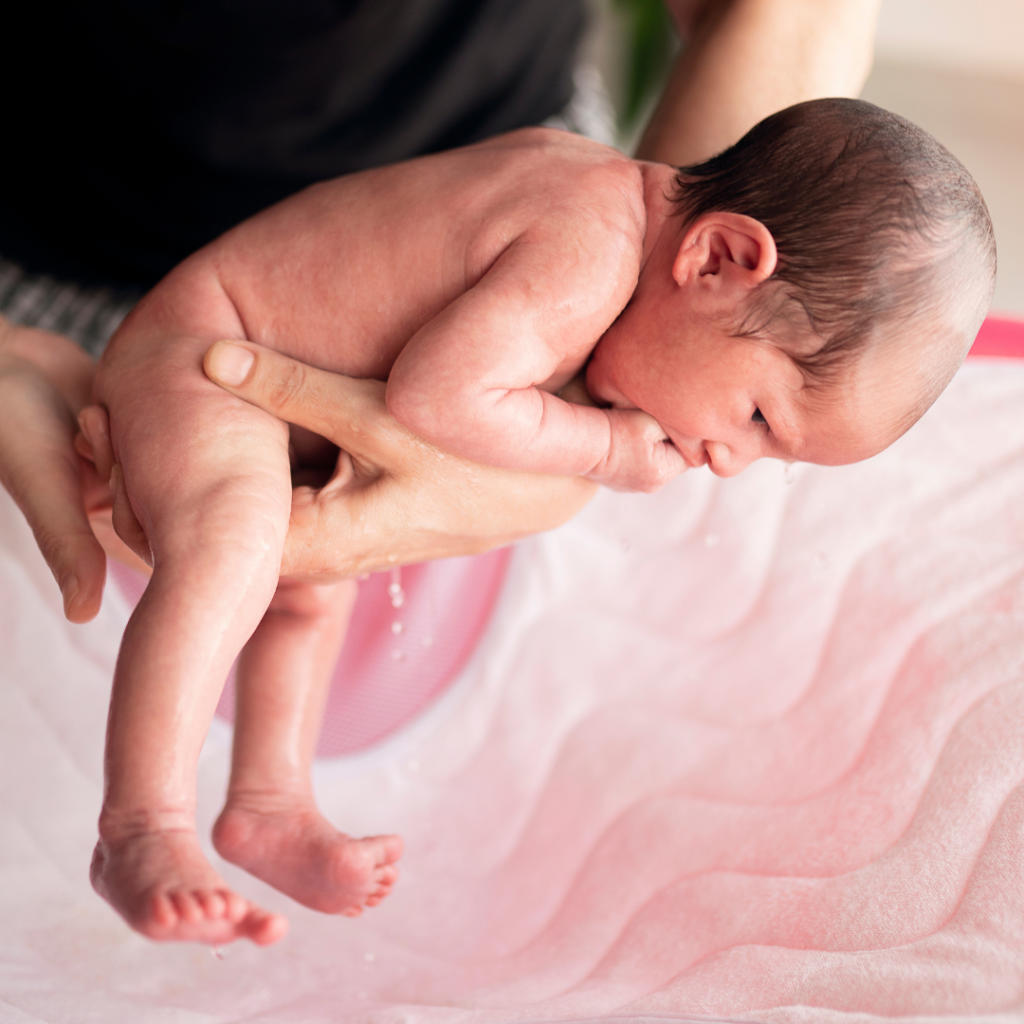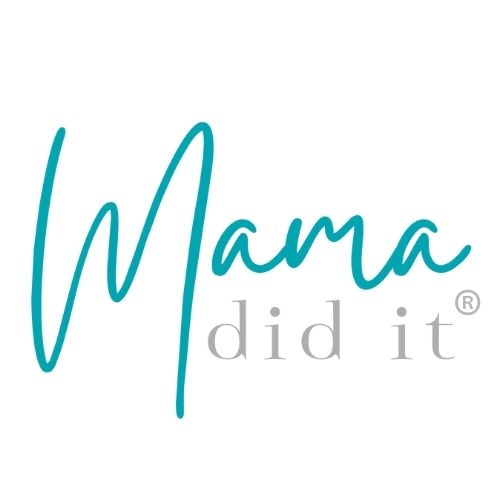Here’s how to do umbilical cord care properly, and how to clean a newborn belly button once the cord falls off, from a mother-baby nurse.
When a baby is born they are attached to their mother’s placenta by the umbilical cord. This cord provided all of the oxygen and nutrients needed for growth and development. Within a few minutes of birth, this cord is clamped and cut and begins the healing process. Here’s how to properly do umbilical cord care, and how to clean a newborn belly button.
Cord care has changed often over the years. This is because we learn new things and discover new research on the best practices. I remember when rubbing alcohol was recommended with every diaper change. Though rubbing alcohol doesn’t hurt, and may help every now and then, what we found was parents were using it so often, that it actually prevented the cord from ever falling off.
A newborn’s umbilical cord should fall off within the first two weeks after birth. Baby’s stump shouldn’t be on for much longer than that, but that’s exactly what we were finding with excess alcohol use. This is because it’s natural bacteria that helps the cord fall off. If we kill it all, it prolongs the process.
How to Clean a Newborn Belly Button: Umbilical Cord Care
In your hospital or birthing center, the umbilical cord is clamped with a plastic clamp, which is then removed before you go home. What’s left is a little stump at the base of the cord.
It’s important to keep your baby’s belly button clean and dry as much as possible until the cord falls off. This can prevent infection. If your newborn’s diapers do not have a cord cut out, simply diaper as usual, then flip the diaper down to expose your newborn’s stump area.
For baby’s first bath and subsequent baths with the stump, here are some easy care tips:
- Avoid tub baths in baby bathtubs until the stump falls off.
- Use sponge baths with clean water, a wet washcloth, and mild soap being extra gentle around the cord area.
- Fold the top of the diaper down with each diaper change if the newborn diapers don’t have a cord cut out.
- Don’t submerge your baby in bath water until the cord stump falls off.

To make a sponge bath a more pleasant experience for your baby, try warming blankets and towels before beginning. Have washcloths, baby’s soap, a hairbrush, and a cup for rinsing set up, with bottles open and ready to go. Hold your swaddled baby in a football hold, tucked underneath your arm as you wash their hair. This is usually a pleasant experience for your baby.
For washing their body, place them on a warm towel, soap up a washcloth with warm water, and wipe them down gently and quickly. Rinse the washcloth out, and wipe them down with a clean washcloth. You can wipe their eyes with a wet cotton ball from the inside corner of their eye to the outer corner. Use a different cotton ball for each eye. Wrap them up in the warm towel and snuggle. Sponge bath complete.
Signs of Infection of the Umbilical Cord
According to the American Academy of Pediatrics, new parents should call the baby’s doctor if there is a red lump at the base of the stump or the surrounding skin, yellowish fluid coming from the cord, or continuous bleeding from the area. These are signs of an infection.
How to Clean a Newborn Belly Button: Umbilical Cord Care
Once you take your baby home, it’s important to perform newborn belly button care for the first couple of days. Anytime you bathe around the cord or need to touch the cord, be sure to wash your hands. This is important for proper care.
If your newborn’s belly button begins to smell funky, it’s a good idea to take a cotton swab, dip it in rubbing alcohol, and gently wipe it around the base of the cord. Only do this rarely. Be sure to keep your baby’s diaper underneath the cord.
Your newborn’s cord stump will continue to dry, shrink, turn yellowish, and eventually fall off.
Our First Personal Experience with the Cord
After a week of being home with my first baby, I put my husband in charge of changing our son’s diaper while I went to the kitchen for a snack. I suddenly heard an ear-piercing, “RACHEL!!!” from across the house. So, I took off running thinking our little one started choking. I found my husband in a panic explaining to me that our baby’s cord was gone and there was a little blood coming from the area.
After calmly explaining everything was ok, I chuckled a bit and explained that this was normal and the cord probably came off in our baby’s diaper. Sure enough, that’s what happened. I had failed to prepare my husband appropriately. He saw the blood and thought something was wrong.
When a cord falls off, it doesn’t hurt your baby. There are no nerve endings at the end of their cord. But they may bleed just a bit as the wound is now open. You can use a clean baby washcloth and a little warm water (and clean hands) to gently blot around the belly button.
It is normal for there to be a few drops of blood or very little bleeding when the cord stump falls off. This is all part of the healing process. Once the cord falls off, your baby will have a small wound that scabs over and heals for several days. Don’t pick at the scab. The best way is to allow it to heal on its own.
Once the cord falls off, you can give your baby a bath in their newborn tub. The cord area can get wet and you can also clean over it with a soapy washcloth as you do the rest of your baby’s body. Gently pat to dry and diaper and dress your baby like usual.
DON’T MISS “How much breast milk does my baby need?” and “How big is my baby’s stomach?” Click here to find the answer to these common questions.
Post may contain affiliate links
